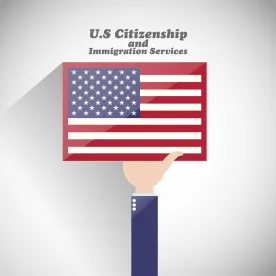Background
On October 8, 2020, the U.S. Department of Homeland Security (DHS) published its interim final rule, “Strengthening the H-1B Nonimmigrant Visa Classification Program,” which will become effective December 7, 2020. This rule brings clarity to prior U.S. Citizenship and Immigration Services (USCIS) adjudication policies that had been interpreted through two internal memoranda—Determining Employer-Employee Relationship for Adjudication of H-1B Petitions, Including Third-Party Site Placements and Contracts and Itineraries Requirements for H-1B Petitions Involving Third-Party Worksites. Earlier this year, USCIS agreed to rescind the third-party placement memo due to a recent settlement and later issued guidance stating it would also rescind the employer-employee memo. Despite these policy rescissions, which initially appeared to benefit third-party consulting employers, DHS has now promulgated its interim final rule to officially implement adjudication policies the federal agency had been practicing for years.
Limiting Third-Party Placements to One-Year Approvals
The interim final rule provides a stark change to the validity period granted to H-1B petitioners that place employees at third-party worksites. Under the new rule, employers will no longer be allowed to request a three-year validity period for H-1B petitions where the beneficiary will be placed at a third-party worksite. Instead, a one-year maximum will be imposed for any off-site H-1B petition. In the rescinded prior guidance, USCIS had previously limited H-1B petition validity to the term it could determine a valid employer-employee relationship would exist (usually matching the H-1B validity period to contract end dates). Employers will now be compelled to file H-1B extensions each year, rather than every three years, without any opportunity to demonstrate that the employer-employee relationship will exist for more than one year. This new limitation may disproportionately affect third-party site petitioners (as opposed to petitioners whose employees work at an onsite facility and are still allowed three years), significantly increase employer filing fees, and create the risk of a request for evidence (RFE) or even a denied petition each year.
In its reasoning for the interim final rule, DHS claims that the one-year limit is necessary because “the nature of contracting work leads to beneficiaries being more transient.” Despite the fact that an amended labor condition application (LCA) and H-1B petition is required when a material change in employment occurs, DHS alleges that the “potential for fraud and abuse in the H-1B program” and inability to track beneficiaries necessitates a one-year validity period for all third-party placements. DHS also cites concerns of shorter agreements between the petitioner and its end client and the agency’s inability to monitor the H-1B program requirements as outweighing an employer’s ability to prove that the employer-employee relationship would last longer than one year.
While USCIS has historically matched the H-1B validity period to contract end dates or issued RFEs seeking updated contracts, the interim final rule does not allow an employer to show that the employer-employee relationship will exist beyond the one-year time frame. While USCIS’s recent practice of shorting petitions to contract end dates severely limited employers’ ability to place beneficiaries at third-party worksites, this new policy creates further restrictions that will force employers to file each extension annually and will limit long-term employment planning.
Despite USCIS’s announcement that it will only allow for one-year approvals at third-party placement sites, the U.S. Department of Labor (DOL) will continue to issue LCAs for three years even when the employee is placed at a third-party worksite. The interim final rule specifies that USCIS will continue to accept LCAs certified for three years at third-party worksites so long as they are valid for the requested employment dates. This alleviates the burden of employers requesting a new LCA with each H-1B extension and allows employers to continue to utilize a certified LCA for three years. The continued use of a certified LCA allows employers to continue the current practice of paying the prevailing wage determined at the onset of the three-year validity period rather than increasing an employee’s wage on a yearly basis.
Abandoning the Itinerary Requirement
After recent litigation and a settlement agreement, USCIS committed to abandoning the itinerary requirement for H-1B petitions until further agency guidance was issued. Despite anticipation that this guidance may attempt to reinstate the itinerary requirement, DHS has taken the stance that the general itinerary provision does not apply to H-1B petitions. This new stance complies with the settlement agreement relating to ITServe Alliance, Inc. v. Cissna, a case in which the U.S. District Court for the District of Columbia struck down USCIS’s use of the itinerary requirement. While employers had hoped abandoning the itinerary requirement would also cease USCIS’s practice of issuing shortened petitions, the new one-year approval limitations on employees at third-party placement worksites will allow USCIS to achieve its goal of limiting third-party placement approvals.
Clarifying the Definition of “Employer-Employee Relationship” and “Corroborating Evidence”
The employer-employee relationship test has been debated within USCIS through conflicting memoranda and inconsistent adjudication. As many employers have seen, USCIS has historically issued RFEs, curtailed petitions, and even issued denials when determining employer-employee relationships in seemingly identical situations. This practice has become increasingly frustrating to employers that rely on third-party placement at client sites to meet business needs.
In the interim final rule, DHS provides the following non-exhaustive list of factors the agency will analyze to determine if an employer-employee relationship exists:
- “[w]hether the petitioner supervises the beneficiary and, if so, where such supervision takes place”;
- “where the supervision is not at the petitioner’s worksite, how the petitioner maintains such supervision”;
- “whether the petitioner has the right to control the work of the beneficiary on a day-to-day basis and to assign projects”;
- “whether the petitioner provides the tools or instrumentalities needed for the beneficiary to perform the duties of employment”;
- “whether the petitioner hires, pays, and has the ability to fire the beneficiary”;
- “whether the petitioner evaluates the work-product of the beneficiary”;
- “whether the petitioner claims the beneficiary as an employee for tax purposes”;
- “whether the petitioner provides the beneficiary any type of employee benefits”;
- “whether the beneficiary uses proprietary information of the petitioner in order to perform the duties of employment”;
- “whether the beneficiary produces an end-product that is directly linked to the petitioner’s line of business”; and
- “whether the petitioner has the ability to control the manner and means in which the work product of the beneficiary is accomplished.”
The interim final rule also stipulates the corroborating evidence employers must submit in third-party placement cases, such as contracts, work orders, and other similar evidence “to establish that the beneficiary will perform services in a specialty occupation at the third-party worksite(s).” The documentation must be detailed enough to provide a “sufficiently comprehensive view” of the work to be performed.
While USCIS has used the above factors and corroborating evidence since it issued the employer-employee memo in 2010, the interim final rule clarifies that the agency will interpret the factors under a “totality of the circumstances” analysis. As a result, employers will not be able to argue that one factor alone can be used to determine an employer-employee relationship as previous guidance suggested. Despite the new totality of the circumstances test, the interim final rule will clarify what employers have seen as common practice with USCIS adjudication to determine an employer-employee relationship.
Defining “Worksite,” “Third-Party Worksite,” and “Non-Speculative” Employment
DHS has updated the regulations to define “worksite” and “third-party worksite” to be consistent with the DOL’s interpretation of place of employment. DHS will define worksite as “the physical location where the work is actually performed by the H-1B nonimmigrant.” Further, DHS will define third-party worksite as “a worksite, other than the beneficiary’s residence in the United States, that is not owned or leased, and not operated, by the petitioner.”
Similarly, the interim final rule clarifies DHS’s interpretation of “non-speculative” employment for an H-1B beneficiary. This requirement states that an employer must have non-speculative employment for the beneficiary at the time of filing by requiring evidence that “a bona fide job offer exists and that actual work will be available as of the requested start date.” While “non-speculative” employment was not clearly defined in the preexisting regulations, DHS’s new interpretation reflects practices that USCIS has implemented while adjudicating H-1B petitions for years. Employers will likely continue to see RFEs seeking corroborating evidence to demonstrate that a non-speculative work assignment will be available at the time of filing and throughout the requested H-1B validity period.
Recent Litigation and Potential Developments
While DHS intends to make the aforementioned changes quickly, recent litigation seeking an injunction of the interim final rule may stifle the proposed changes. The complaint states that the interim final rule disproportionately targets and harms professional services businesses, such as software and information technology consulting, that rely on placing H-1B workers offsite. The plaintiffs allege the interim final rule violates the Administrative Procedure Act (APA) as DHS did not seek proper notice and comment rulemaking as necessary. While DHS specifically states the interim final rule is implemented “to reduce the potential for additional APA-based litigation,” this quickly filed complaint demonstrates the potential backlash the agency may face for advancing its policies in this manner.





 />i
/>i
